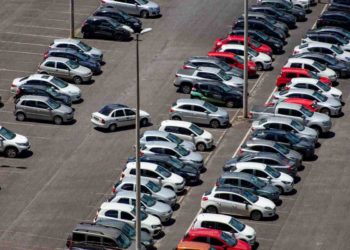A lot can go sideways on long road trips. Is your car up to the challenge? Equipping your vehicle for quick response can distinguish between a temporary inconvenience and a life-or-death scenario.
It all begins with proper planning. Preparing yourself and your ride requires a touch of forethought, but you have ample others from whom you can learn — there’s no need for costly trial and error. Here’s what you should know about equipping your vehicle for quick response in critical moments on your trip.
Table of Contents
Get a Thorough Vehicle Inspection
If you live in a state requiring them, it may be a surprise that some jurisdictions don’t enact minimum standards to ensure the vehicles hitting the road are safe. It doesn’t take a vivid imagination to recognize the dangers that can occur if a breakdown happens at 75 mph.
Furthermore, many amateur mechanics fail to recognize how various car components affect one another. A novice may mistakenly believe that worn struts mean little more than a bumpy ride. However, failing to replace them when necessary affects all of the following:
- Tires
- Joints
- Brakes
- Steering system
It’s not hard to see how one easily overlooked part can cause trouble. Your solution? Find a mechanic qualified in your vehicle’s type to perform a thorough preflight checklist before you hit the road. Your dealer is a wise first choice if you don’t know anyone — although you might pay more, they specialize in your make and model and faulty repairs could void your warranty.
Carry the Right Gear
Once you prep your ride, much of equipping your vehicle for quick response in critical moments boils down to carrying the right gear — and knowing how to use it. The most comprehensive pre-assembled kits in the world won’t help you in an emergency if you get caught in a learning curve at a critical moment. The time to master Epi-pen use is before you enter anaphylactic shock.
1. First Aid
A well-stocked first aid kit is your first order of business. At a minimum, it should contain the following:
- Personal protective equipment (PPE) like masks and gloves
- Antibiotic wash and ointment
- Various bandages, wraps and gauze
- Adhesive tape
- Cold compresses
- Scissors and tweezers
- Clean drinking water and purifiers
- Emergency medicines for acute interventions, such as Epi-pens, insulin and high-sugar foods
It’s also wise to carry an extra stash of prescriptions and acetaminophen for pain relief. NSAIDS like aspirin and Advil can make bleeding worse.
2. Tools
The right tools can get you back on the road if something happens to your ride. But what if you aren’t handy? First, check your insurance. Many policies include roadside assistance but limit its applicability to a few miles from your home — not helpful on a cross-country trek. A supplement like Triple A can be a lifesaver.
However, it’s still wise to learn your way around a wrench, if only to avoid waiting hours for help to arrive. Here’s a handy list of essentials to keep in your ride at all times, especially on longer treks:
- A socket set
- Various wrenches
- A hammer or mallet
- Assorted screwdrivers
- Pliers and wire cutters
- A jack, jack stand and spare tire
- Triangles and emergency flares
- Jumper cables
- A headlamp so you can see while keeping your hands free
- An OBD-II scanner
- Factory service manual
- Zip ties and duct tape
- Oil, antifreeze and emergency tire repair
Finally, consider the elements. Countless people have run into trouble on winter roads, from ice and snow as well as the resulting traffic jams. It’s easy to forget safety when running from one heated building to another — but what if you get caught behind a 20-car pileup for hours in subzero temperatures? Ensure you have adequate clothing to withstand the elements, including sturdy shoes, in case you have to abandon your vehicle and walk to safety.
Although we mentioned water as a first aid supply, it bears repeating. You should carry at least one gallon per person per day or a purifier for the same reason. Use common sense — for example, your needs may increase in desert areas. Plus, while you can survive for quite some time without food, a snack or two can improve morale, especially if traveling with children.
Master Your Equipment
Equipping your vehicle for quick response during critical moments is only half the battle. The most important tool you should outfit is your mind.
Many community colleges offer basic automotive courses that anyone can take, even if you never plan to become a mechanic. Who knows? You might discover a fun new pastime by investing in a junker and following YouTube videos until you can swap a leaky radiator faster than a pit crew at the Indy 500.
The American Red Cross and the American Heart Association offer basic first aid and CPR classes, which, frankly, should be prerequisites for owning a human body. Your employer might require certification, but if not, check with your local parks and recreation department for upcoming course offerings.
Equipping Your Vehicle for Quick Response
Equipping your vehicle for quick response in critical moments requires a proactive approach. You need the right gear and the know-how to use it.
Before your next road trip, take the above steps to enhance your safety and peace of mind. Your passengers appreciate riding with a knowledgeable guide at the helm, and you’ll feel secure in your ability to tackle any roadblocks you may encounter.














